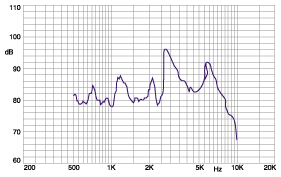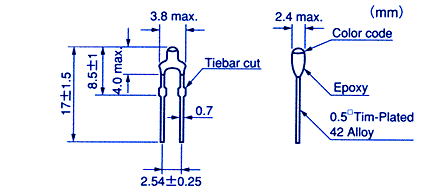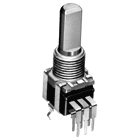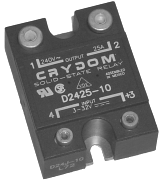General Information
AnnouncementsWeb Resources
Other IAP classes
Lectures
1. The Basics2. Timing, analog hack
3. IR (sony, irda)
4. Our favorite add-ons
Labs
1. Assembling the board.2. Intro to programming.
3. Input/Output/IR
4. Your own project?
Introduction to Microcontrollers |
Components you can use
- Bujeon BBM-01 Buzzer


Frequency Response of BBM-01Here is some sample code to make a 2700 Hz tone.
Here is the full data sheet.
All Electronics stocks these guys as item PZB-01, three for $1.00. - Semitec #103AT-2 Thermistor

Part No. Rated zero-power
resistance
R25B Value
B25/85Operating temperature
range103AT-2 10.0k ohm 3435 -50~110 Here is the analog hack code we saw in lecture two to read the resistance with a digital port.
Here is the full data sheet.
All Electronics part number THR-20, price two for a dollar. - Mystery Thermistor
The thermistors with leads already on them are not the ones we ordered. Investigate their resistance with a volatge meter to find out what they do. Feel free to chop off the leads.
- Photo Resistors
The magic of cadmium sulfide is that the resistance changes in response to the amount of light. We have little ones (allcorp part PRE-14) and big hermetically sealed ones (allcorp part PRE-16). Both range in resistance from 35 Ohms in the dark to 500 kOhms in light.
- Potentiometers


Potentiometers are variable resistors that you can twist or slide. We've got a good variey of them.
- Relays
Relays are switches that microprocessors can control. They're essential for controlling high-power, like turning on a desk lamp with the PIC.
We have a handful of solid state relays -- which are extra cool because they have no moving parts. Since they use little power the PIC output can drive them directly. To use mechanical relays with the PIC you'll need a little amplifier circuit.

"This Solid State Relay has a max Load Current rating of 25A, and a max peak single cycle surge current rating of 250A. Operating voltage 90-280VAC, 47-63Hz. Random Turn-On, phase controllable (DC control)."
--KRISTRONIC.comHere is the data sheet for the Crydom Series I D2425-10 Solid State Relay.
- Switches
There are lots and lots of different switches and you can never find the one that's just right.
We've got toggle switches, momentary push-button switches, push-on/push-off switches, and DIP switches. We've got single-pole and dual-pole, single-throw and dual-throw. We've got micro, mini, and standard sizes. But in the circuit it's all the same: wire the input pin on the pic to the switch and to 5V by a pull-up resistor. Wire the other side of the switch to ground.
picture To make life even easier, the pins on port b have internal pullup resistors, which you can enable with the command:
port_b_pullups(TRUE);
We also have some special switches. Tilt Switches which close when they are tilted, reed switches which close when they are near a magnet, and encoders, which set a number of switches to correspond to a numerical selection or rotational position.
- Breakbeam sensor
This little devil has a IR led and an IR receiver neatly packaged in a little U. If anything enters the U and obstructs the path of the IR, the PIC can tell.
- Other stuff that we have, but haven't had time to play with yet
- Bar Graph LED
- 7 Segment LED
- 16x2 character LCD display
- Motorized dual-potentiometer
- IR reflectance sensor
- Surface mount Hall Effect sensors
- Electrovoltaic photocell (should be enough to power the PIC)